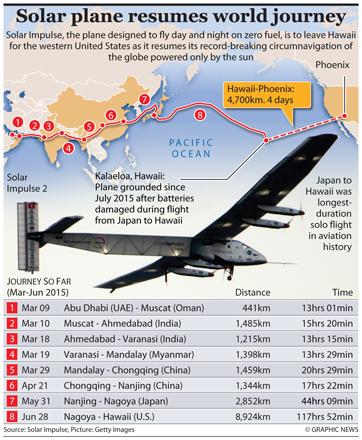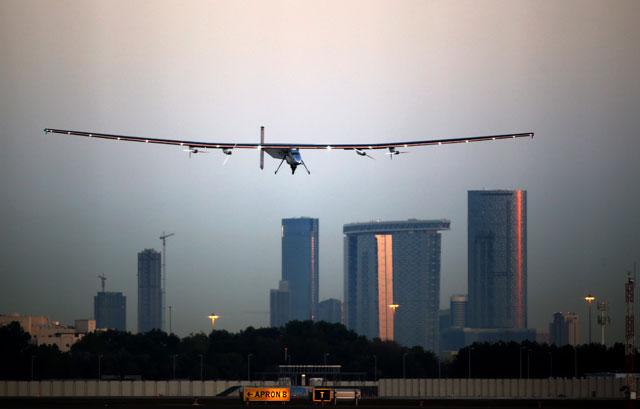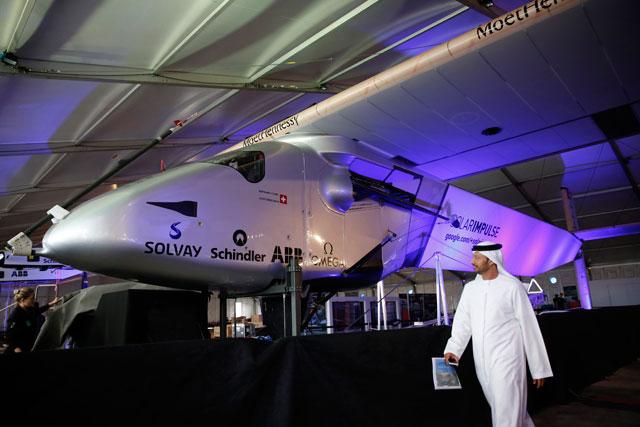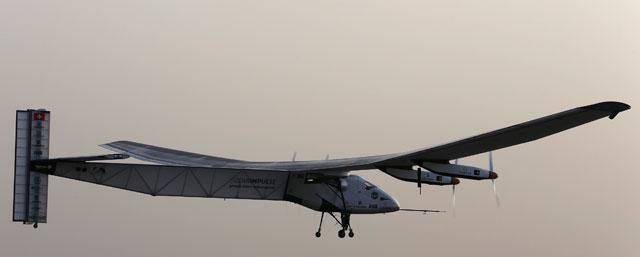You are here
Solar Impulse 2 to resume round-the-world flight within days
By AFP - Apr 19,2016 - Last updated at Apr 19,2016

HONOLULU — The Solar Impulse 2 sun-powered plane is set to resume its record-breaking flight around the world within days, leaving Hawaii when weather permits, a spokesman said Friday.
The experimental aircraft was grounded in July when its batteries suffered problems halfway through its 35,000-kilometre trip.
“The Solar Impulse is waiting for a weather window to fly, so we will not be able to confirm the time and date for take-off,” Chris Shigas, a spokesman for the project, told AFP.
The crew took several months to repair the damage from high tropical temperatures during the flight’s final Pacific stage, a record journey of five days and five nights between Nagoya, Japan and Hawaii.
The plane conducted its first successful test flight following repairs in late February, with the next leg, estimated to take four days, expected to end in Los Angeles, San Francisco, Vancouver or Phoenix, Arizona.
Shigas said the timing of the take-off would not affect its landing schedule.
“The destinations in US mainland have not been confirmed yet, and will be dependent on weather conditions,” she said. “We know from experience that crossing the United States is challenging in terms of weather.”
The goal is to reach New York’s JFK Airport before crossing the Atlantic, she added.
Solar Impulse 2 left Abu Dhabi in the United Arab Emirates in March last year and has since travelled nearly 18,025 kilometres.
Its wings are covered with more than 17,000 photovoltaic cells that charge the batteries when the sun is shining during the day.
Pilots Bertrand Piccard and Andre Borschberg are taking alternating turns flying each stage because the aircraft can fit only one at a time.
Dubbed the “paper plane”, Solar Impulse 2 has a wingspan of 72 metres, larger than a Boeing 747’s, and a weight of 2.3 tonnes, approximately that of a van.
It flies at a maximum altitude of 8,634 metres and must withstand high temperature fluctuations, with the pilots using oxygen tanks to breathe inside the tiny cockpit.
The project aims to demonstrate the possibilities of renewable solar energy.
Related Articles
Just after dawn on Monday, Swiss pioneers will embark on the first round-the-world trip ever attempted with a solar-powered plane.
A plane with the top speed of a homing pigeon is set to embark on a landmark round-the-world flight powered only by the sun's energy, organisers said Tuesday.
Solar Impulse 2 landed Monday in Oman, completing the initial leg of its epic bid to become the first solar-powered plane to fly around the world, testing its pilots to the limit.


















